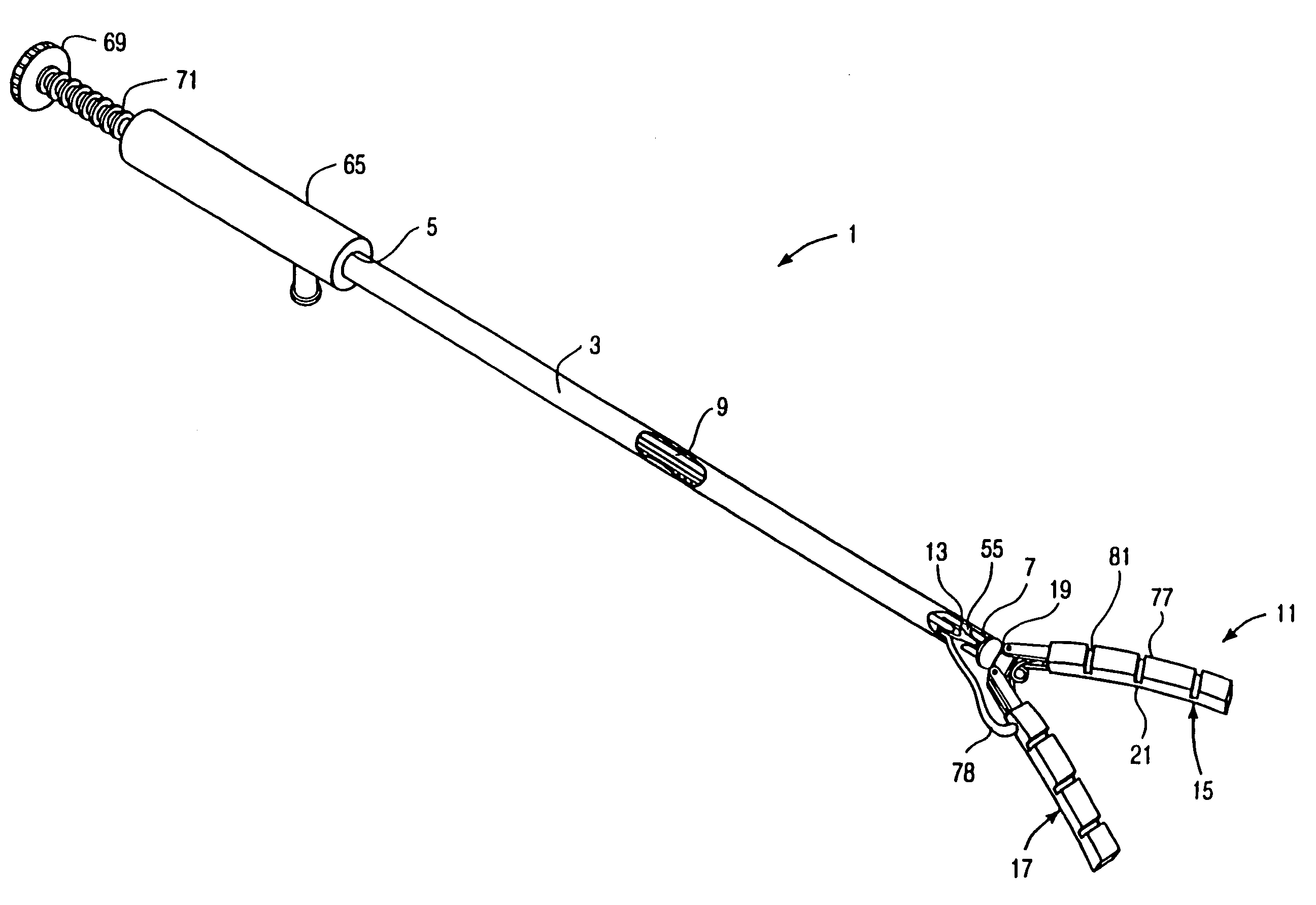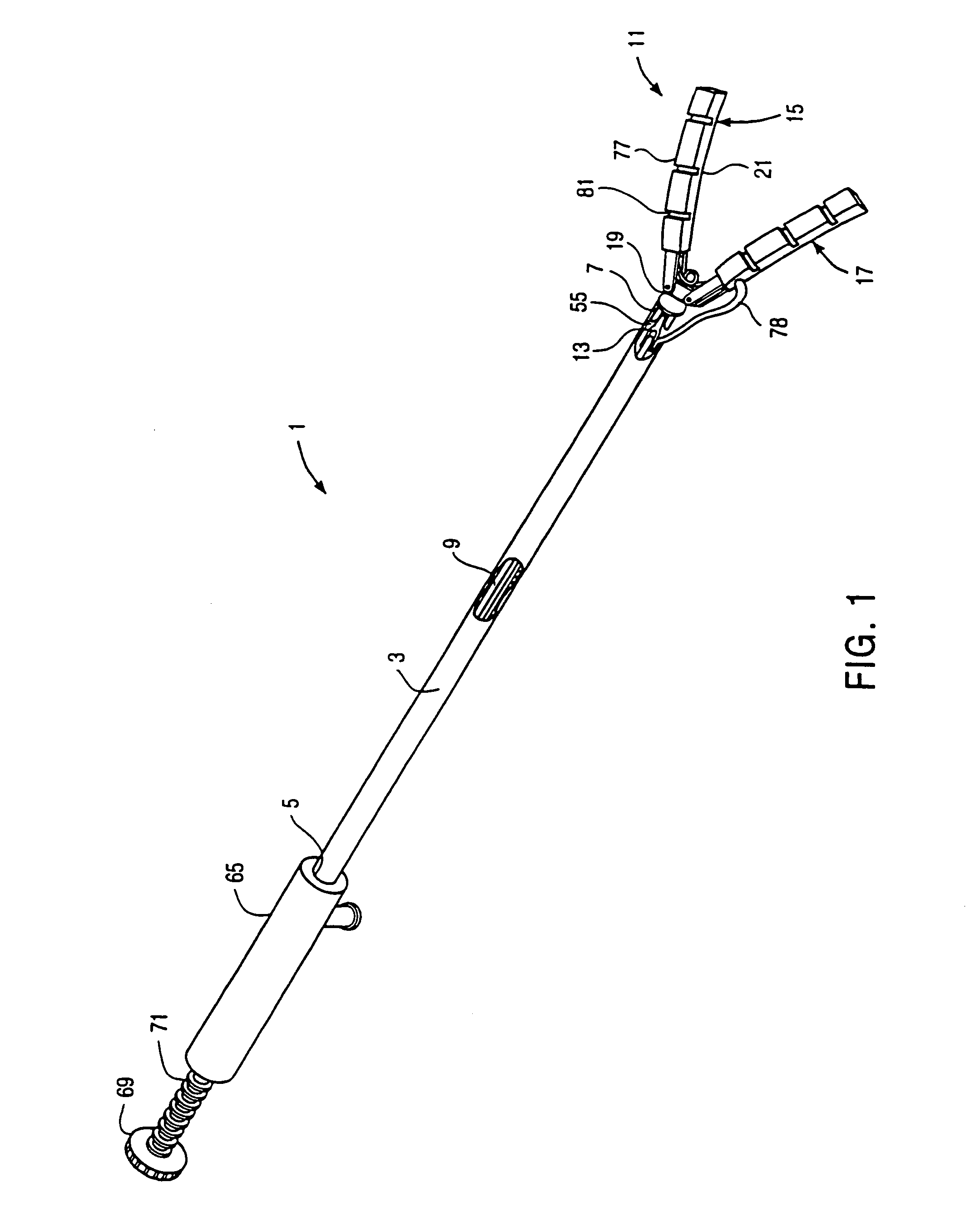Device and method for isolating a surgical site
a surgical site and device technology, applied in the field of surgical site isolating, can solve the problems of insufficient blood flow to the heart, become one of the most common life-threatening medical problems facing older men and women, and the trauma of gross thoracotomies used in conventional open heart surgery to perform coronary artery bypass grafting is high for the patient, so as to achieve the effect of clearing blood and debris
- Summary
- Abstract
- Description
- Claims
- Application Information
AI Technical Summary
Benefits of technology
Problems solved by technology
Method used
Image
Examples
Embodiment Construction
[0034]The system and method of the present invention for isolating a surgical site will now be described in detail. Referring to FIG. 1, an endoscopic device 1 includes a shaft 3 having a proximal end 5, a distal end 7 and an axial passage 9 therebetween. Shaft 3 is preferably a stainless steel tube having an outer diameter in the range of 2–10 mm, usually 4–8 mm, so as to fit within a cannula having an internal diameter in the range of 2–15 mm. Shaft 3 can also be introduced directly through a percutaneous incision in the patient. Shaft 3 has a length selected to reach a target site in a body cavity, such as the abdomen or thoracic cavity, and to extend sufficiently out of the body cavity to facilitate easy manipulation of endoscopic device1. Thus, shaft 3 should be at least between 10 cm and 40 cm and is preferably between 17 cm and 30 cm. It should be noted that although shaft 3 is shown as having a circular cross-sectional shape in the drawings, shaft 3 could alternatively have ...
PUM
 Login to View More
Login to View More Abstract
Description
Claims
Application Information
 Login to View More
Login to View More - R&D
- Intellectual Property
- Life Sciences
- Materials
- Tech Scout
- Unparalleled Data Quality
- Higher Quality Content
- 60% Fewer Hallucinations
Browse by: Latest US Patents, China's latest patents, Technical Efficacy Thesaurus, Application Domain, Technology Topic, Popular Technical Reports.
© 2025 PatSnap. All rights reserved.Legal|Privacy policy|Modern Slavery Act Transparency Statement|Sitemap|About US| Contact US: help@patsnap.com



